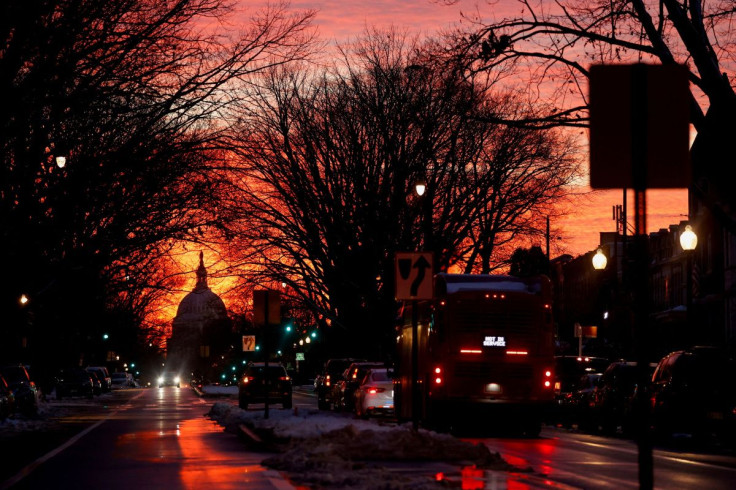Column: How Medicare Reforms Could Help U.S. Retirees Facing High Inflation

U.S. seniors tell pollsters that high inflation is one of their top worries - and that makes sense. Aside from Social Security, which is adjusted annually to reflect consumer prices, retiree income is fixed.
Policymakers have talked over the years about making the Social Security cost-of-living (COLA) formula more generous, but that would just be a tweak. If we really want to help seniors cope with inflation, we need to tackle the rising cost of healthcare, which historically has increased more quickly than general inflation.
In the Medicare program, overall out-of-pocket costs now consume 19% of the average Social Security benefit, up from 15% in 2002, according to the Kaiser Family Foundation (KFF). The increase is split roughly in half between premiums and deductibles, KFF found.
Those figures point to the need for structural reforms to Medicare. It is time to examine the dramatic privatization of Medicare that has occurred in recent decades, and ask whether our current marketplace-driven structures make sense. Mounting evidence suggests that we could save billions of dollars for retirees and taxpayers alike by making changes to the current system.
"These market mechanisms have had 50 years to prove themselves, but the situation is only getting worse," said Peter Arno, director of health policy research at the Political Economy Research Institute at the University of Massachusetts-Amherst.
Sometime in the next few years, Medicare Advantage - the managed care alternative to traditional Medicare offered by private health insurance companies - will account for half of all Medicare enrollment. Insurance companies own the Part D prescription drug business lock, stock, and barrel - if you want coverage, you will buy it from a private insurer.
Advocates of privatization argue that marketplace competition has kept costs down and encouraged innovation. But Medicare spending actually is higher - and growing more quickly per person for beneficiaries in Medicare Advantage than in traditional Medicare. In 2019, the higher spending added $7 billion in costs to the Medicare program that would not have been there if Advantage participants had instead been enrolled in Original Medicare, KFF research shows https://bit.ly/3Q04tAh.
Earlier this year, a federal investigation found "widespread and persistent problems related to inappropriate denials of services and payment" by Advantage plans. The Office of Inspector General in the U.S. Department of Health and Human Services found evidence https://bit.ly/3z8AJdJ that these plans are preventing enrollees from receiving medically necessary care.
IMPROVING PRESCRIPTION DRUG PROTECTIONS
In the Part D prescription drug marketplace, drug plan premiums have remained relatively flat in recent years. But focusing on premiums alone misses the bigger picture of total out-of-pocket costs. Part D does not have a cap on the total out-of-pocket costs for prescription drugs, and beneficiaries who take high-cost specialty drugs can face very high costs.
The Part D deductible can vary by plan, but in 2022 it cannot exceed $480. That covers you during the "initial benefit period," up to $4,430 in combined spending by you and your insurer. Beyond that point, you pay a percentage of drug costs that varies as your spending escalates.
The marketplace approach to health insurance has also created unnecessary complexity for Medicare enrollees, who face the burden of shopping among dozens of plan offerings in government-sponsored insurance marketplaces. They need to do it annually, as plan offerings or their health needs shift - yet few are willing to take on this chore.
KFF has found that https://bit.ly/3zawJZX more than half of Medicare enrollees do not review or compare their coverage options annually, including 46% who "never" or "rarely" revisited their plans. This means that many Part D enrollees are paying too much or do not have adequate coverage, since drug plans routinely change the "formularies" that determine the terms of coverage from year to year.
Reversing Medicare privatization entirely seems unlikely. But we can reform the program so it does a better job of controlling costs borne by retirees.
The U.S. Congress is considering an important step in this direction with a proposal aimed at containing prescription drug prices. The proposed legislation would empower Medicare for the first time to negotiate the price of some high-cost drugs with their manufacturers. That approach has been in place for a long time in the Medicaid program, and at the Department of Veterans Affairs, and it has proven effective.
Just as important, the bill would place a hard cap of $2,000 on out-of-pocket costs for Part D enrollees. And it would require pharmaceutical makers to pay rebates if drug price increases exceed general inflation.
But more steps are needed.
Right now, the playing fields of traditional Medicare versus Advantage programs are uneven. Advantage plans come with a built-in cap on out-of-pocket costs - the average ceiling in 2021 was $5,091 for in-network services, according to KFF. But traditional Medicare enrollees enjoy no such ceiling - many buy commercial Medigap coverage, or receive protections through Medicaid or a retiree benefit from a former employer.
A uniform out-of-pocket cap would make Medigap unnecessary, and make traditional Medicare work better for enrollees. Couple that with getting a handle on prescription drug costs, and we could make serious progress on reining in the cost of living for retirees.
The opinions expressed here are those of the author, a columnist for Reuters.
(Writing by Mark Miller in Chicago; Editing by Matthew Lewis)
© Copyright Thomson Reuters 2024. All rights reserved.











